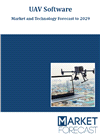At Aurora Flight Sciences, a Boeing company, the path to flight testing begins with testing on the ground. Recent upgrades to Aurora’s Centaur hardware-in-the-loop simulator (HILSim) make it even easier for teams to test, refine, and prove out new flight technology before it touches the tarmac. Once proven on the ground, it’s a smooth transition to flight test in the company’s Centaur optionally piloted aircraft (OPA).
The Centaur OPA can operate as a surrogate uncrewed system, flown from a ground station with an on-board safety pilot, to allow flight testing of autonomous capabilities in the National Airspace System (NAS). The Centaur HILSim features a complete Centaur airframe with the same hardware and software as the actual aircraft. Using the HILSim, engineers are able to see exactly how the aircraft will behave in flight.
“The Centaur HILSim gives us a nearly complete picture of how hardware and software interact under realistic flight conditions,” said Software Engineer Erica Powers. “It allows us to uncover integration issues early and resolve challenges faster and more efficiently while still on the ground.”

Market forecasts by Region, Architecture, Application, Interface, Hardware and End User. Market Overview, Market Dynamics, Opportunity Analysis, Scenario Forecasts, and Leading Companies
Download free sample pages More informationAurora’s flight test team recently completed a HILSim test campaign focused on validating a key connection between the aircraft’s mission management system (MMS) and Aurora’s autonomy framework, Autonomy Core (ACore). By replicating flight-like conditions in simulation, the team was able to observe how data flowed across the network and test how the MMS responded to conditions such as delayed or corrupted messages. The results confirmed that the system maintained stable communication and proper coordination across nodes, even under demanding conditions.
“Validating the MMS to ACore interface in simulation gave us a level of confidence that would have taken weeks of flight time to achieve,” said Erica. “We confirmed message integrity, timing, and fault recovery in a fully controlled environment – all before the hardware ever left the ground.”
With this validation, a common interface for autonomy testing is now available across Aurora’s SKIRON-X small UAS, including its HILSim and foam-constructed surrogate air vehicle, and the Centaur HILSim and aircraft. When developing new autonomous capabilities, engineering teams can start testing with Group 1 and 2 drones and seamlessly advance to testing with an optionally piloted twin-engine aircraft in the Group 4 class.
HIL simulation has become a critical step in Aurora’s flight test process. By validating software, hardware, and interface behavior early, HILSim reduces flight risk and shortens test schedules by providing engineers with valuable insight before the aircraft reaches the flight line.
“It’s important to note that HIL simulation doesn’t replace flight testing,” said Erica. “HILSim ensures that when an aircraft moves from ground to flight testing, system behaviors are well understood, and the flight tests can focus more on refinement rather than troubleshooting.”